

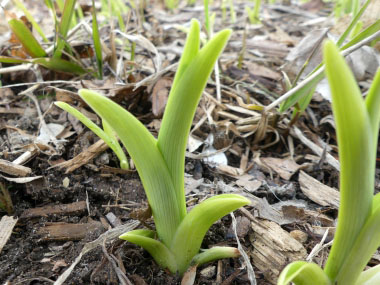
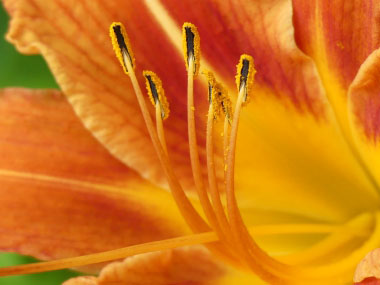
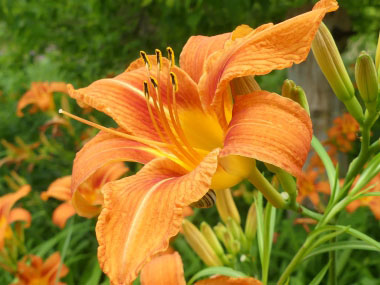
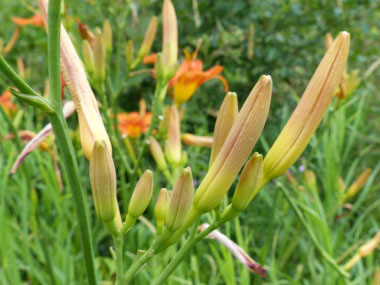
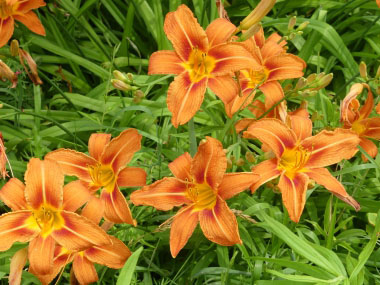
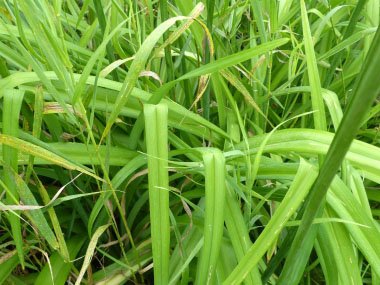
To support our efforts please browse our store (books with health benefits, etc.).
These beautiful flowers provide colour and contrast to ditches, fields and in gardens when grown in clumps or when massed over larger areas. This species is effective in curbing soil erosion when planted on slopes. It has become a very common species because it spreads rapidly by rhizomes into woods and fields and along roadsides (hence the reason many refer to this as the ditch lily). The genus Hemerocallis comes from the Greek words hemera meaning day and kallos meaning beauty as each beautiful flower is open for only a day. The specific epithet means tawny-orange. This plant is also known as the Tawny Daylily, Tiger and Ditch Daylily. It is in the Asphodelaceae family (formerly Grass Tree Family – Xanthorrhoeaceae).
Distinguishing Features
Orange daylilies are very easy to spot when in bloom. Large orange flowers are easy to identify. The most common place to spot them are along roadsides in the summer months.
Flowers
A few to several upward-facing flowers are borne in a branched cluster at the top of the stem. The blossoms are orange, funnel-shaped and unspotted. Each flower opens for only one day, and is composed of 3 petals with wavy margins and 3 petal-like sepals. Flowers measure about 7 to 10 cm (3 to 4") long and they lack fragrance. They bloom from June through early August (depending on location). Because there are many flower buds on each stem, and many stems in a clump, plants may bloom for several weeks.
 Fields
of Nutrition has medicinal benefits and vitamin/mineral content of Orange Daylily.
Fields
of Nutrition has medicinal benefits and vitamin/mineral content of Orange Daylily.
Leaves
Sword-like leaves are arranged in pairs and grow only at the base of the plant. The narrowly triangular leaves are 30 to 90 cm (12 to 30”) long, smooth and slightly folded, with a central ridge running lengthwise down the back of the leaf. They are light green and young leaves are greenish white.
Height
This plant can grow anywhere from 40 to 90 cm (16 to 30”).
Habitat
Originally from Eastern Asia, this plant has become a natural part of the landscape throughout parts of the US, eastern Canada, and in many European countries. They are commonly found in roadside ditches, woodland borders, disturbed sites and in cultivated gardens. They can survive in shaded or sunny areas with moist or dry soils.
Edible Parts
Leaves and young shoots can be cooked. The leaves should be used when very young because they quickly become fibrous. Flowers and flower buds can be used raw or cooked. Flower buds can be pickled. The tubers can also be enjoyed raw or cooked (younger ones taste better).
Other Name
Ditch Lily.
Similar Plants
Yellow Daylily.
Winter Survival Food Handbook

PDF Plant Magazines
Types of Wild Food
Geographic Zones Seasons
Disclaimer
EdibleWildFood.com is informational in nature. While we strive to be 100% accurate, it is solely up to the reader to ensure proper plant identification. Some wild plants are poisonous or can have serious adverse health effects.
We are not health professionals, medical doctors, nor are we nutritionists. It is up to the reader to verify nutritional information and health benefits with qualified professionals for all edible plants listed in this web site. Please click here for more information.
Why Edible Wild Food?
- Food costs are rising
- Free, wild food is readily abundant
- Wild food adds nutrition to your diet
- Wild food can help treat various medical conditions





